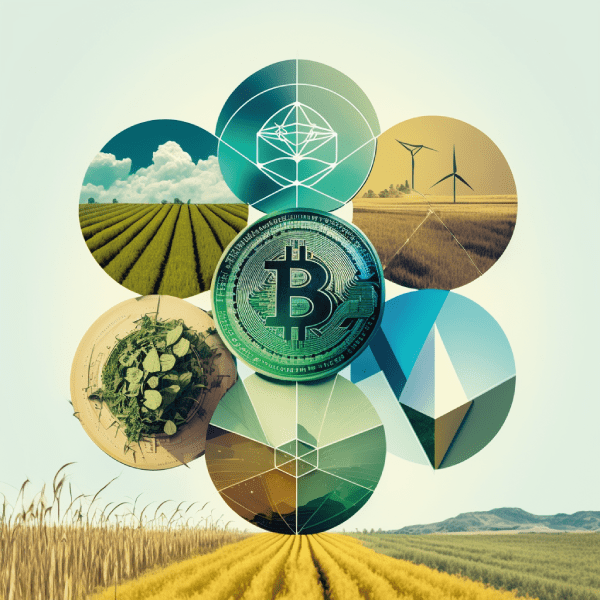Introduction
In recent years, there has been a significant shift towards plant-based and alternative foods, as consumers become more conscious of their health, the environment, and animal welfare. Plant-based and alternative foods are no longer just for vegans or vegetarians but are increasingly becoming mainstream options for people who want to reduce their meat consumption or adopt a more sustainable and ethical diet.
Health benefits
Plant-based and alternative foods are often lower in saturated fats and cholesterol, which can reduce the risk of heart disease, high blood pressure, and diabetes. They are also rich in fiber, vitamins, and minerals, which can support a healthy digestive system and overall wellbeing.
Moreover, some plant-based alternatives, such as soy-based products, can provide a good source of protein, making them a great option for those who want to maintain a healthy diet.
Environmental impact
The livestock industry is a significant contributor to greenhouse gas emissions and deforestation. By choosing plant-based and alternative foods, consumers can help reduce the carbon footprint associated with their diet.
Additionally, plant-based and alternative foods require fewer resources, such as water and land, to produce, making them a more sustainable choice.
Animal welfare
The conditions in which animals are raised for food production have been a growing concern for many consumers. By choosing plant-based and alternative foods, consumers can avoid contributing to animal cruelty and support ethical farming practices.
Mainstream availability
Plant-based and alternative foods are no longer just niche products found in specialty stores. They are increasingly becoming mainstream options, with many restaurants and fast-food chains now offering plant-based menu items.
Additionally, grocery stores are expanding their selection of plant-based and alternative foods to meet the growing demand.
Challenges and considerations
Despite the many benefits of plant-based and alternative foods, there are some challenges and considerations to keep in mind. For example, some plant-based alternatives may be heavily processed and contain high levels of sodium or added sugars.
Additionally, individuals with certain dietary restrictions, such as gluten intolerance, may need to carefully read labels to ensure that plant-based alternatives do not contain any allergens or irritants.
Conclusion
The rise of plant-based and alternative foods is a promising trend towards a more sustainable, ethical, and healthy food system. By incorporating more plant-based options into our diets, we can support our health, the environment, and animal welfare.
However, it is important to be mindful of the challenges and considerations when selecting plant-based and alternative foods, to ensure that they are truly a healthy and sustainable choice.
Interesting facts
- Plant-based meat, also known as meat alternatives, is one of the fastest-growing segments in the food industry. Companies like Beyond Meat and Impossible Foods are leading the charge, creating plant-based burgers, sausages, and other meat substitutes that taste and look like real meat. According to a report by the Good Food Institute, the plant-based meat market is projected to reach $21.7 billion by 2025, up from $4.2 billion in 2020.
- Dairy alternatives, such as plant-based milks, yogurts, and cheeses, are also gaining popularity. Soy, almond, and oat milk are among the most common plant-based milk options, and companies like Oatly and Califia Farms are experiencing significant growth. According to a report by Grand View Research, the global dairy alternatives market is projected to reach $46.8 billion by 2024, up from $21.7 billion in 2018.
- Plant-based protein powders, made from ingredients like pea, brown rice, and hemp, are a popular choice for athletes and fitness enthusiasts. These protein powders offer a sustainable and healthy alternative to traditional whey protein powders, which are derived from dairy. According to a report by Allied Market Research, the global plant-based protein market is projected to reach $14.32 billion by 2026, up from $7.19 billion in 2018.
- Plant-based seafood is a newer category of alternative foods that is gaining traction. Companies like Good Catch and Sophie’s Kitchen are creating plant-based versions of fish and seafood, using ingredients like soy, pea protein, and seaweed. According to a report by MarketsandMarkets, the global plant-based seafood market is projected to reach $1.3 billion by 2027, up from $972.5 million in 2020.
- Mushrooms are a versatile and nutritious ingredient that can be used to create a range of plant-based foods, from burgers to jerky to snack bars. Companies like MycoTechnology and Atlast Food Co. are using mushrooms as a base for their products, taking advantage of their umami flavor and texture. According to a report by ResearchAndMarkets, the global mushroom-based food market is projected to reach $50.4 billion by 2027, up from $32.8 billion in 2020.
These examples, facts, and figures show that plant-based and alternative foods are not just a passing trend but a rapidly growing market that is set to transform the food industry. With more innovation and investment, these products have the potential to provide a healthier and more sustainable future for all.



